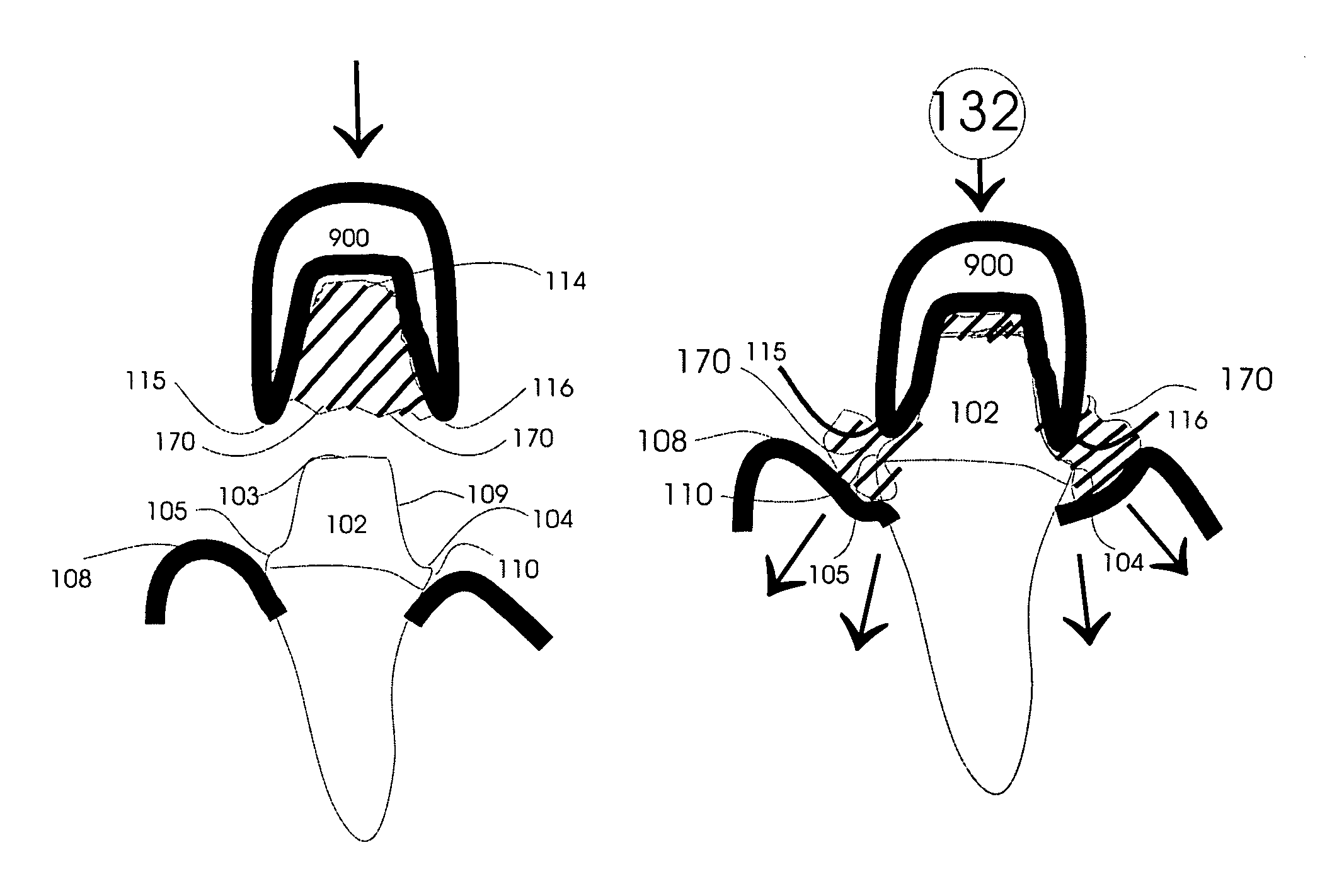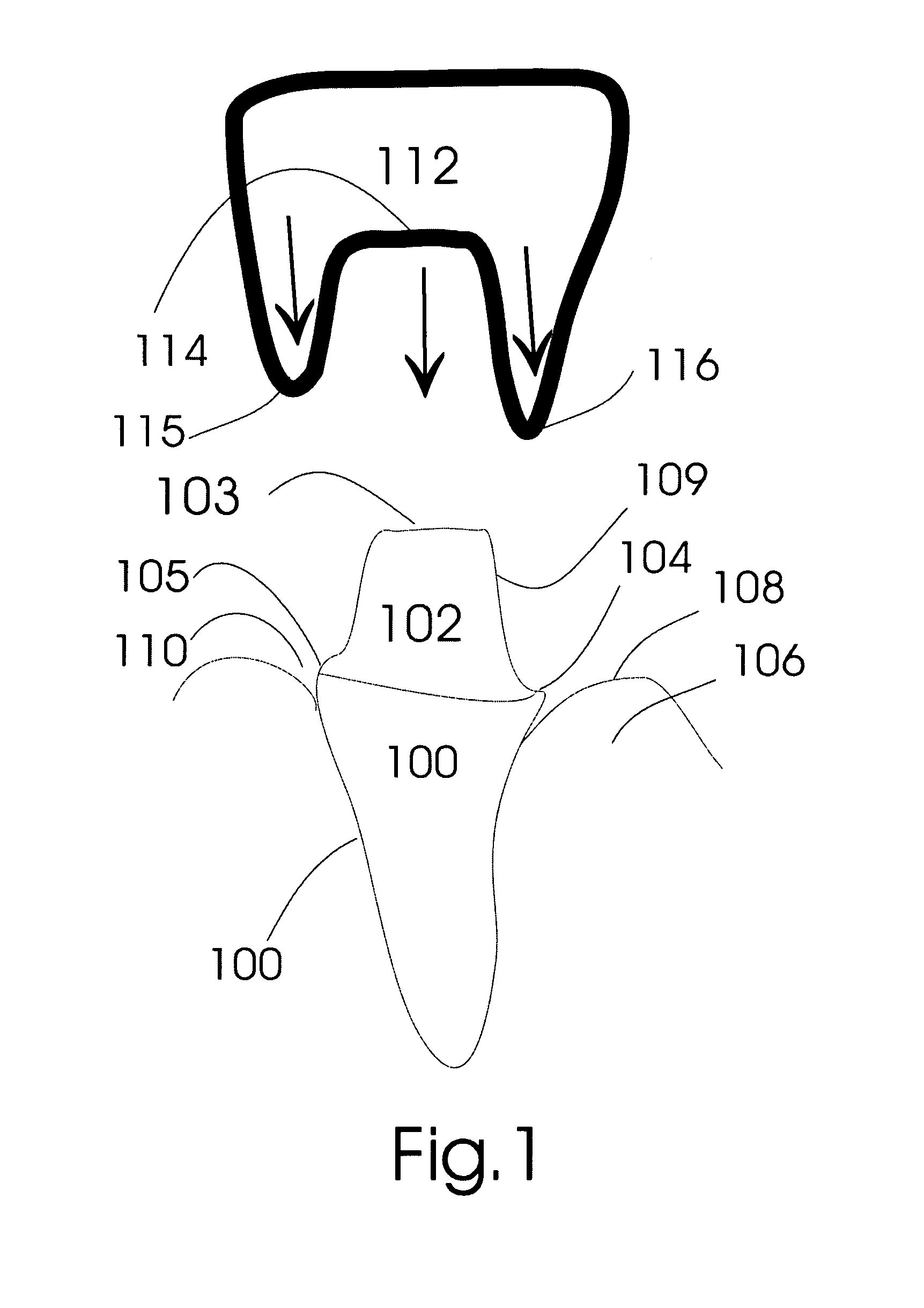Gingival retraction device and method
a retraction device and gingival technology, applied in the field of gingival retraction devices and methods, can solve the problems of wasting significant amount of cords in the process, no optimal retraction device, and inability to use retraction cords, so as to improve the amount of pressure on the gingival tissue, prevent displacement, and withdraw easily
- Summary
- Abstract
- Description
- Claims
- Application Information
AI Technical Summary
Benefits of technology
Problems solved by technology
Method used
Image
Examples
Embodiment Construction
[0071]Referring to FIG. 1 there is illustrated a human tooth 100 that has been prepared for a dental procedure by conventional means. Specifically the surface tooth structure of the tooth 100 has been removed creating a tooth abutment 102 having a tooth margin 104, 105. The tooth 100 is embedded in gingival tissue 106 having a gingival crest 108. Between the gingival tissue 106 and the tooth 100 is located a sulcus 110.
[0072]A provisional restoration 112 has been fabricated by conventional means from a dental impression to register with the prepared tooth 102. The provisional restoration, “temp”, 112 has an interior surface 114 and a distal temp margin 116, and a mesial temp margin 115 that are together configured to conform to the tooth abutment 102 and the mesial tooth margin 105 and the distal tooth margin 104. As can be seen in the drawings the preparation of the tooth 100 and thus the provisional restoration 112 may not be symmetric about the center of the tooth 100.
[0073]Refer...
PUM
 Login to View More
Login to View More Abstract
Description
Claims
Application Information
 Login to View More
Login to View More - R&D
- Intellectual Property
- Life Sciences
- Materials
- Tech Scout
- Unparalleled Data Quality
- Higher Quality Content
- 60% Fewer Hallucinations
Browse by: Latest US Patents, China's latest patents, Technical Efficacy Thesaurus, Application Domain, Technology Topic, Popular Technical Reports.
© 2025 PatSnap. All rights reserved.Legal|Privacy policy|Modern Slavery Act Transparency Statement|Sitemap|About US| Contact US: help@patsnap.com



